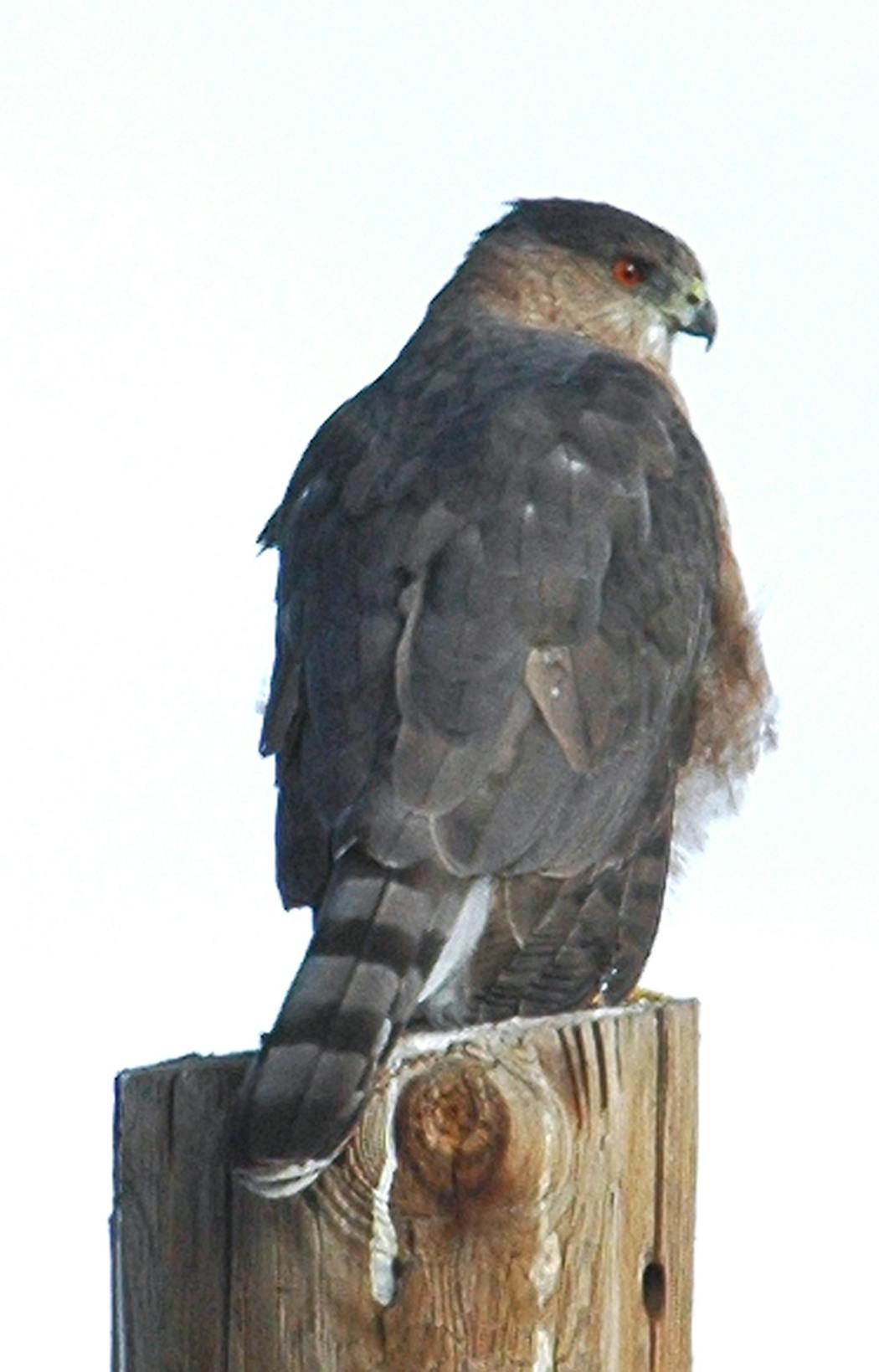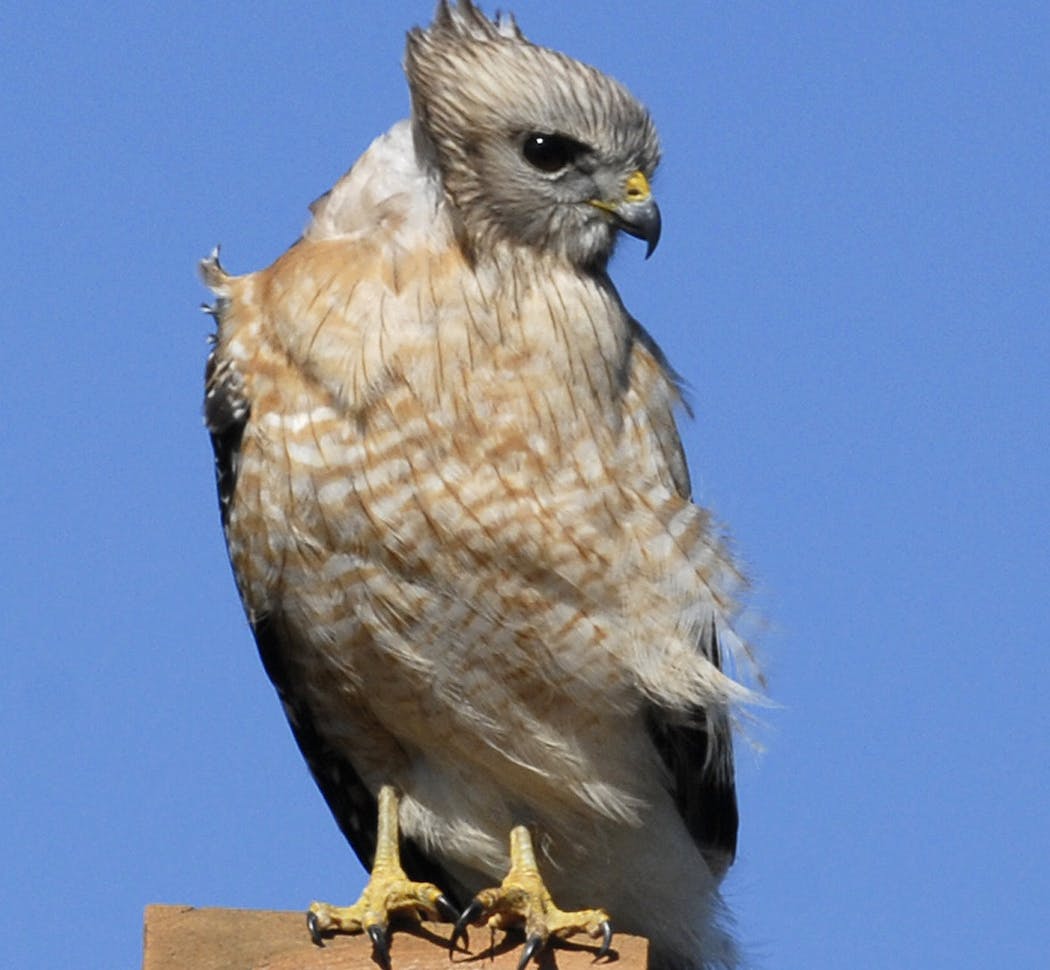How can you tell a broad-winged hawk from a red-tailed hawk?
Both are common hunters locally. Both are members of the buteo family, the term used to describe hawks with broad wings built for soaring.
They look different, certainly, if you can get a close enough look. Red-tails are larger, with a telling tail: Adult red-tails have a rusty tail. Broad-winged hawks are smaller birds, and have tails with obvious bands.
The two exist on common ground because they hunt largely different prey. Both are mostly perch hunters, sit-and-wait predators. They share about 25 percent of their diet. (If they competed fully, one species would dominate, and the other would relocate.)
Hunting from a perch might be the most usual way urban folks see red-tails. They are easily found atop power and light poles along metro highways.
Red-tails are birds of open land with patches of trees. They are more rural than urban, across the continent. Highway medians are smaller in scale than rural lands, but hold the same small mammals.
Broad-wings are birds of the forest, hunting from tree perches beneath the canopy. Broad-wings also hunt from power lines, usually adjacent to tree cover. I've used that behavior to tentatively identify the birds at a distance.
Best foot forward
Red-tails often are on the power poles, broad-wings often are on neighborhood power lines. What's behind the post-wire choice? I wonder if the broad-winged hawks' smaller feet allow them to more easily grip a wire. But this is not established science.
That said, you can tell much about a bird's lifestyle by looking at its feet.
Of the two species, red-tail and broad-wing, the former has larger, stronger feet. It hunts prey as large as rabbits. It eats mostly mammals — voles, mice, rabbits, snowshoe hares, jackrabbits and ground squirrels.
Its diet includes pheasants, smaller birds like starlings, snakes and carrion. It can carry prey weighing as much as 5 pounds.
Broad-winged hawks have a more varied diet, mostly smaller prey items, appropriate for small feet. Their menu is topped with frogs, toads and small rodents. They eat insects, reptiles and small birds.
Woodland species
Two other hawk species can be seen in the metro area — red-shouldered and Cooper's. Both are woodland birds. One way to distinguish red-shouldered from the more or less similar broad-winged is by the tail. The former has more bands on its tail.
Cooper's is a neighborhood hawk here. It hunts songbirds. Cooper's are accipiters, birds with short wings and long tails. They have evolved for maneuvering in tight places, for twisting chases of fleeing feeder birds. Juvenile Cooper's sometimes overwinter.
Red-shouldered hawks, being woodland birds, are seen less often. Watch spring skies for these returning migrants flying high courtship circles. They might announce their presence with repeated keening cries.
Broad-winged hawks migrate, often in huge soaring groups known as kettles. Hawk Ridge in Duluth is famous for fall broad-winged hawk migration, often thousands seen in a day.
Some red-tails migrate, often spending the winter just to our south. Some of them stay here for the winter, up there on the highway poles, waiting for dinner to make a mistake.
Read Jim Williams' birding blog at startribune.com/wingnut.
Live video of man who set himself on fire outside court proves challenging for news organizations





